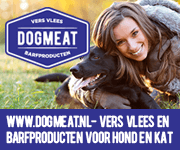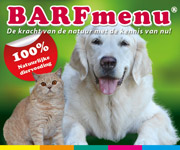These shopping expeditions were easy to see in the videos Dr. Mech
showed of Yellowstone wolves trotting through elk herds. From time
to time they would chase an elk, testing the animal' strength and
resilience, and when they chose a target, the animal was easy to
spot, for its posture and gait didn' match that of the rest of the
herd.
Much has been made of wolves tendency to kill more than they can
consume, but this surplus killing, as it is called, is not as
wasteful as it first appears.
Wolves can't eat more than their stomachs can hold, explained Dr.
Mech, but they store the excess by burying it in a cache, a hole in
the ground, for later consumption. The contents of a cache can be
half a calf, the leg or bones of an adult elk, or even regurgitated
meat. The cache is usually some distance from the kill, up to a mile
or more away. When game is scarce, cached food will keep a pack
alive. I'm convinced that wolves remember where they cache their
food because I'e seen them come back as much as a year later and
walk without hesitation to the exact location.
Wolves also regurgitate to feed their young and, in the case of
breeding males, to feed their mates.
Lukas, a six-year-old at the Wolf Conservation Center in New York,
tears at the carcass of a road-killed deer. The wolves at the Center
are fed dry dog food and fresh roadkill as it becomes available.
Alpha is out
Dr. Mech no longer uses the term Alpha to describe the dominant
male and female; rather, he describes them as the breeding pair.
The family structure of wolves is much like our own, he explained.
The whole business of Alpha wolves came about because the first
wolf researchers didn't understand wolf families, and they put
unrelated wolves from different locations together. While the wolves
sorted out who was in charge, the researchers concluded that every
wolf pack had an ongoing fight for dominance, hence the so-called
Alpha, Beta, and Omega wolves. That's just not how it works.
In the wild, a pack is a family. A breeding pair has a litter of
pups, and the following year, they have another. Now the pack
consists of two parents, who are in charge of things, plus
yearlings, who are one year old, and infant pups. The following
year, the pack is older and larger, with two-year-olds, yearlings,
and pups. By the time they are three or four years old, most young
wolves have dispersed, gone out to start their own families.
Dr. Mech added that in a wolf pack, all of the parents energy and
resources are focused on reproduction. The male helps feed his mate
through the winter to keep her in good reproductive health, he
said. Both parents feed the infants, and if prey is abundant, older
offspring may do so as well. Pups typically nurse for one to four
minutes every three hours, and they're weaned at seven to nine
weeks.






